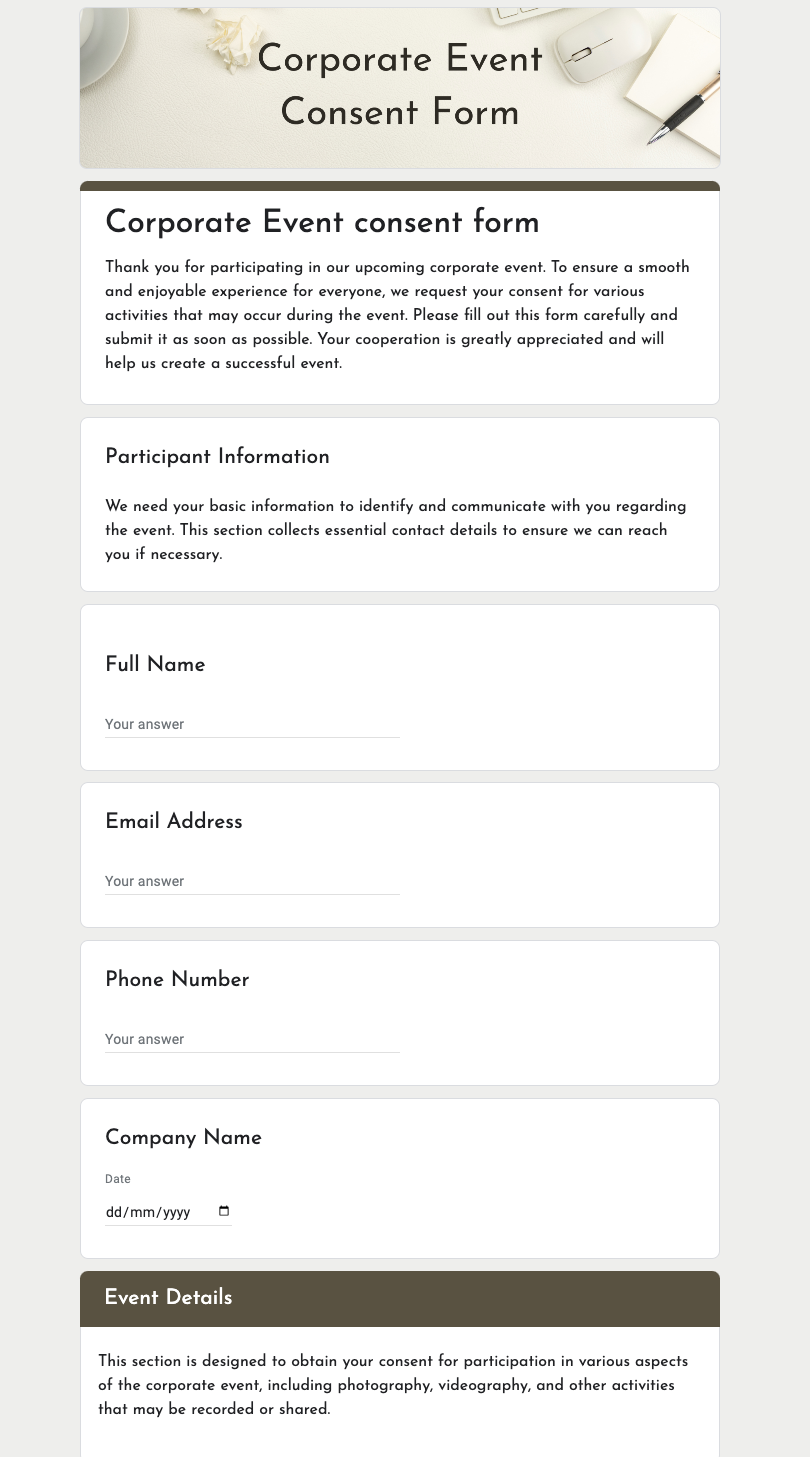Corporate Event consent form
FREE
Using a Corporate Event Consent Form ensures that all participants are fully informed about the event’s details and any media usage, providing clear legal protection for your organization. This form helps maintain transparency, fosters trust with attendees, and ensures that everyone consents to the terms and conditions of participation. By using this form, you can confidently manage your event, knowing that all permissions are properly documented, reducing potential disputes and enhancing the overall experience for everyone involved. Make your event smoother and more secure with a simple yet effective consent process.



